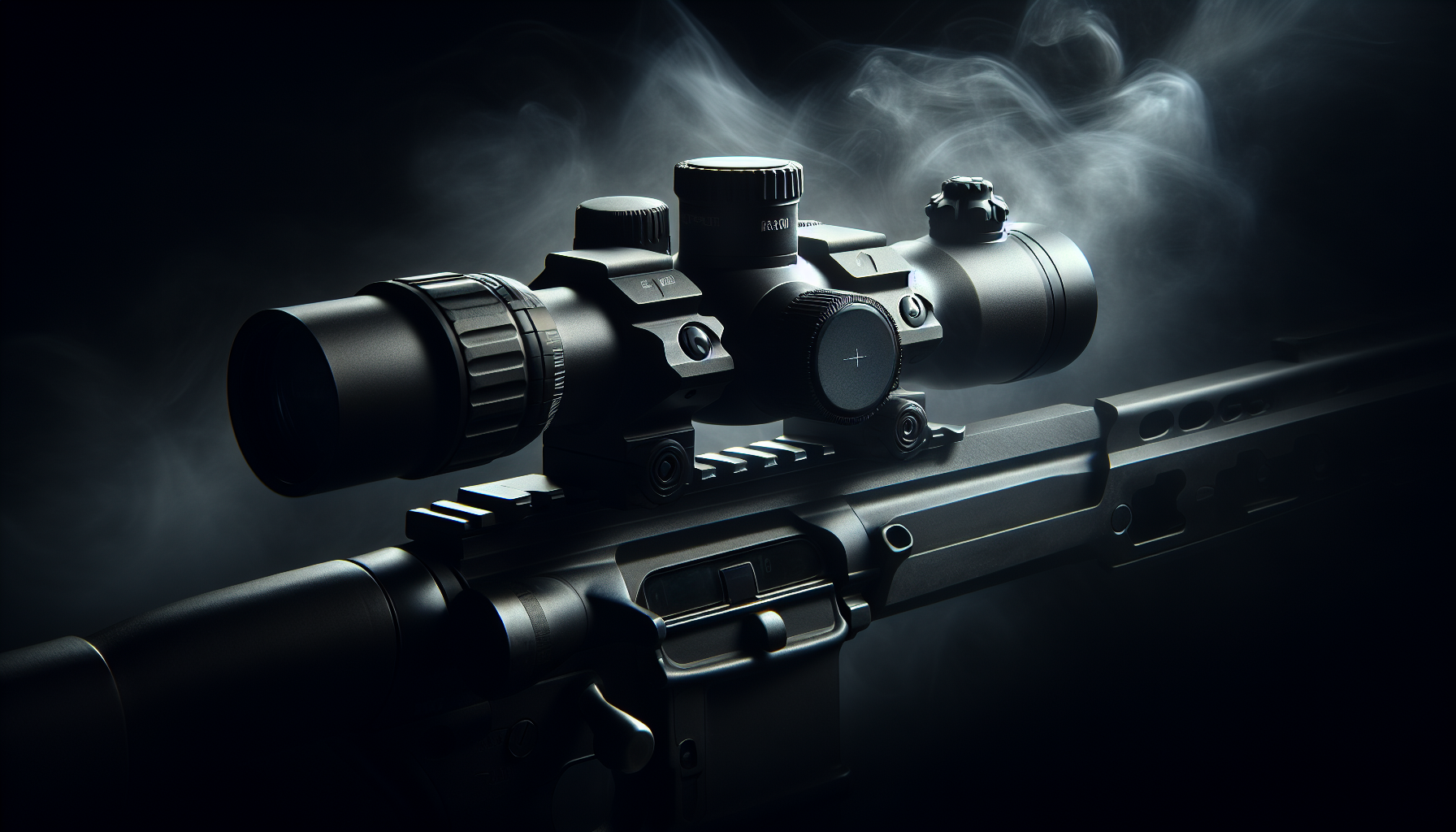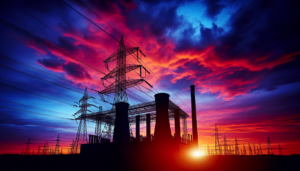
Night vision and thermal optics play a critical role in enhancing the effectiveness and accuracy of firearms in low-light and challenging environments. By harnessing advanced technological capabilities, these optics enable shooters to detect and engage targets in complete darkness or concealment, vastly extending their operational capabilities. Night vision allows for viewing and identifying targets by amplifying minimal available light, while thermal optics work by detecting the heat signatures emitted by living beings, making them ideal for tracking and surveillance. Together, these cutting-edge technologies provide invaluable tools for military personnel, law enforcement agencies, and even hunters to navigate the darkness with precision and confidence, ensuring safety and success in their operations.
Enhanced Vision in Low-Light Conditions
Night vision and thermal optics are revolutionary technologies that enhance vision in low-light conditions. Whether you are a military professional, a hunter, a firefighter, or involved in industrial and commercial settings, these tools provide a wide range of benefits. Understanding how these technologies work and their diverse applications is crucial for making informed decisions. This comprehensive article explores the various aspects of night vision and thermal optics, including their working principles, types of devices, advantages, and limitations.
Understanding Night Vision Technology
Night vision technology enables individuals to see in conditions where natural light is inadequate or absent. It uses image intensification or light amplification to amplify any available light, such as starlight, moonlight, or ambient light, allowing for clear vision in the dark. This technology has evolved significantly over the years and is now widely used in various fields, including military operations, hunting, and law enforcement.
Types of Night Vision Devices
To meet the diverse needs of users, different types of night vision devices are available. The most common types include night vision goggles, monoculars, binoculars, and rifle scopes. Night vision goggles provide stereoscopic vision, allowing the user to perceive depth and distance accurately. Monoculars are single-eye devices that offer compactness and versatility. Binoculars combine the advantages of goggles and monoculars, providing a more comfortable viewing experience. Rifle scopes, designed specifically for firearm applications, allow for accurate aiming in low-light conditions.
How Night Vision Optics Work
Night vision optics work by capturing and intensifying available light and then converting it into a visible image. The device’s objective lens collects the incoming light and focuses it onto a photocathode. The photocathode converts the photons of light into electrons and amplifies them using a microchannel plate. These amplified electrons strike a phosphor screen, where they are converted back into visible light, creating the final image. The quality of the image depends on the device’s generation, with higher generations offering superior clarity, resolution, and brightness.
Applications of Night Vision Technology
Night vision technology has transformed various industries and revolutionized nighttime operations. In the military and defense sector, it plays a vital role in tactical operations, enabling soldiers to navigate, detect targets, and engage with precision in low-light conditions. For law enforcement agencies, night vision technology enhances surveillance capabilities, making it easier to monitor suspicious activities and apprehend criminals. Hunters can utilize night vision optics to track game in darkness, improving their success rate. Night vision also finds applications in search and rescue missions, providing rescuers with the ability to locate and assist individuals in remote or dark areas efficiently.
Detecting Heat Signatures
In addition to night vision, another essential aspect of enhancing vision is the detection of heat signatures. This is where thermal optics come into play. Instead of relying on light amplification, thermal optics utilize the detection of infrared radiation to create images. This technology is particularly useful in situations where the target or object emits heat, such as humans, animals, or machinery.
Introduction to Thermal Optics
Thermal optics, also known as thermal imaging devices, use a specialized sensor called a microbolometer to detect and measure the heat radiating from objects. Unlike night vision, thermal optics do not require any ambient light and provide an accurate representation of the temperature differences in the environment. This makes them especially useful in complete darkness or challenging weather conditions, such as heavy fog or smoke.
Working Principle of Thermal Imaging
Thermal imaging technology works based on the principle that all objects above absolute zero (-273.15 degrees Celsius) emit thermal radiation. The sensor in thermal optics detects this radiation and converts it into an electrical signal. The signal is then processed and displayed on a screen, presenting a grayscale or colored image based on the temperature variations in the scene. Warmer objects appear brighter, while cooler objects appear darker, allowing for easy identification and differentiation.
Different Types of Thermal Optics
Similar to night vision, thermal optics come in various forms to cater to different needs. Handheld thermal cameras are compact and portable, making them suitable for quick inspections and personal use. Thermal scopes attach to firearms and offer precise target acquisition in low-light or no-light conditions. Thermal binoculars provide a more immersive viewing experience, with the ability to observe distant objects and track heat signatures effectively.
Applications of Thermal Imaging Technology
Thermal imaging technology has gained immense popularity across various industries due to its invaluable applications. In military and defense, thermal optics aid in identifying potential threats, locating hidden enemies, and surveying the battlefield. For firefighters and emergency responders, thermal imaging helps locate the source of fires, assess structural integrity, and identify individuals in smoke-filled environments. In industrial settings, thermal optics play a crucial role in maintenance inspections, detecting equipment malfunctions, and preventing costly breakdowns.
Advantages of Using Night Vision and Thermal Optics
The adoption of night vision and thermal optics brings several advantages that significantly improve operational efficiency and safety.
Improved Target Acquisition
Night vision and thermal optics enable precise target acquisition in low-light conditions or complete darkness. The enhanced visibility allows for accurate aiming and reduces the risk of misidentification or friendly fire incidents. In military operations, this advantage can be life-saving.
Enhanced Situational Awareness
By extending the range of perception beyond the limitations of natural vision, night vision and thermal optics enhance situational awareness. They reveal details and provide valuable information about the environment, potential threats, and obstacles that may otherwise be unnoticed.
Increased Safety
Night vision and thermal optics enhance safety by mitigating risks associated with operating in low-light or hazardous conditions. Firefighters can locate and evacuate individuals quickly, even in smoke-filled environments. Law enforcement officers can detect suspects or dangerous individuals hiding in the dark. Hunters can navigate unfamiliar terrain and avoid potential hazards.
Effective for Stealth Operations
Night vision and thermal optics provide a significant advantage in stealth operations. By operating in darkness or using thermal imaging, individuals can approach targets undetected, gaining a tactical edge. This is particularly crucial for military and law enforcement personnel conducting covert operations.
Military and Defense Applications
The military and defense sectors have been at the forefront of adopting night vision and thermal optics technologies. These tools have transformed the way armed forces operate and have become integral to their tactical operations.
Night Vision and Tactical Operations
Night vision technology has revolutionized tactical operations, providing soldiers with a significant advantage in low-light or nighttime scenarios. It assists in navigation, allowing troops to move swiftly and undetected. Soldiers equipped with night vision devices can detect enemy movements, observe potential threats, and engage with precise targeting, improving overall mission success rates.
Thermal Imaging for Surveillance
Thermal imaging technology has found widespread use in military surveillance operations. By detecting heat signatures, thermal optics enable the identification of potential threats, even in complete darkness or obscured environments. This enhances the effectiveness of surveillance missions, allowing armed forces to monitor enemy movements, detect suspicious activities, and take proactive measures.
Use of Optics in Search and Rescue Missions
Night vision and thermal optics play a crucial role in search and rescue missions, both in military and civilian scenarios. Survivors or lost individuals can be located quickly, especially in remote or dark areas. The ability to identify heat signatures assists rescuers in distinguishing between living beings and other objects, enabling them to prioritize their efforts effectively.
Benefits for Law Enforcement Agencies
Law enforcement agencies heavily rely on night vision and thermal optics for various operations. These technologies enhance officers’ situational awareness during patrols, investigations, and SWAT operations. Night vision assists in tracking suspects, detecting hidden areas, and conducting surveillance. Thermal imaging aids in locating suspects, uncovering drug labs, and detecting evidence, making it invaluable for crime scene investigations.
Hunting and Outdoor Activities
Night vision and thermal optics have become game-changers for hunters and outdoor enthusiasts. These technologies provide a new level of capabilities that greatly enhance the overall experience in low-light conditions.
Night Hunting with Night Vision Optics
Night vision optics have tremendously increased the success and excitement of night hunting. Hunters can spot and track game that would otherwise be invisible in darkness. The ability to see clearly in low-light conditions enables precise targeting and reduces the chance of spooking the prey.
Thermal Optics for Tracking Game
Thermal optics have revolutionized the way hunters track game. By detecting heat signatures, hunters can locate animals even in dense vegetation or when they are motionless. This assists in tracking wounded game, ensuring ethical hunting practices and minimizing suffering.
Observing Wildlife and Nature
Night vision and thermal optics are not limited to hunting. They provide nature enthusiasts with the ability to observe wildlife behavior during nocturnal hours. Unlike traditional flashlight illumination, which may disturb or frighten animals, night vision optics allow for discreet and unobtrusive observation.
Outdoor Security and Personal Safety
Night vision and thermal optics have practical applications beyond hunting and wildlife observation. These technologies enhance outdoor security by providing improved visibility during nighttime patrols or surveillance. Individuals engaged in camping or hiking can use night vision devices to navigate in low-light environments, ensuring personal safety.
Firefighting and Emergency Response
In the firefighting and emergency response sectors, night vision and thermal optics significantly contribute to improving operational efficiency, enhancing safety, and saving lives.
Firefighting Applications of Thermal Imaging
Thermal imaging technology is widely employed by firefighters to locate hotspots and assess fire scenes. It allows them to spot hidden sources of heat, identify structural weaknesses, and determine the spread of fire. This enables more effective firefighting strategies and reduces the risk of re-ignition.
Search and Rescue Operations
Night vision and thermal optics play a critical role in search and rescue operations, enabling responders to locate individuals efficiently. The ability to detect heat signatures aids in finding missing persons in challenging conditions, such as dense forests, rugged terrains, or earthquake-stricken areas.
Locating Hotspots and Thermal Anomalies
Thermal imaging provides firefighters with the ability to quickly identify hotspots and thermal anomalies within a burning structure. This allows them to prioritize their efforts, focus on areas requiring immediate attention, and prevent potentially catastrophic events, such as flashovers or structural collapse.
Emergency Planning and Incident Management
Night vision and thermal optics aid emergency planners and incident managers in preparing for potential disasters. By analyzing thermal imagery and identifying potential risks or vulnerabilities, proactive measures can be taken to mitigate the impact of emergencies. Additionally, these technologies assist in monitoring ongoing incidents and optimizing resource allocation.
Industrial and Commercial Uses
Beyond the realm of defense, hunting, and emergency response, night vision and thermal optics have extensive applications in industrial and commercial settings, helping improve efficiency and safety.
Building Inspections and Maintenance
Thermal imaging technology is commonly used for building inspections and maintenance. By detecting temperature anomalies, such as leaking pipes or faulty wiring, thermal optics enable the identification of potential issues before they escalate. This helps prevent property damage and ensures the safety of occupants.
Identifying Electrical and Mechanical Issues
Night vision and thermal optics aid in identifying electrical and mechanical problems in industrial settings. Infrastructural components that are under excessive stress or experiencing abnormal temperatures can be efficiently located and repaired, reducing the risk of equipment failure and expensive downtime.
Process Monitoring in Manufacturing
Thermal imaging is extensively used in manufacturing processes to monitor product quality. By identifying temperature variations and anomalies, manufacturers can ensure that products are being produced within specified tolerances. This helps maintain consistency, detect faulty items, and prevent waste.
Security and Surveillance Systems
Night vision and thermal optics are crucial components of security and surveillance systems. By enabling clear vision in low-light conditions, these technologies improve the effectiveness of surveillance cameras, ensuring that potential threats are detected and responded to promptly.
Limitations and Considerations
While night vision and thermal optics offer immense benefits, it is important to consider their limitations and various factors before adopting these technologies.
Environmental Factors
Environmental conditions can impact the effectiveness of night vision and thermal optics. Heavy rain, snow, or fog may obstruct visibility or decrease the range of detection. Bright lights, such as streetlights or headlights, can cause glare, affecting image quality. It is crucial to be aware of these factors and choose the appropriate technology accordingly.
Cost and Availability
Night vision and thermal optics can vary significantly in terms of cost and availability. Higher-quality devices and equipment with advanced features may come at a higher price. It is important to consider budget constraints and evaluate the cost-benefit ratio before making a purchase. Additionally, availability may vary based on local regulations and restrictions.
Training and Familiarity
Proper training and familiarization with night vision and thermal optics are crucial for their effective utilization. Users must understand the technology, its limitations, and best practices to maximize its benefits. Training programs and manufacturer-provided resources are essential for acquiring the necessary skills and knowledge.
Legal and Ethical Considerations
When using night vision and thermal optics, it is important to adhere to legal and ethical guidelines. Privacy concerns may arise when conducting surveillance or observing private property. Understanding and complying with local laws and regulations regarding the use of these technologies is essential to avoid legal complications.
Choosing the Right Optics
Selecting the appropriate night vision or thermal optic depends on several factors. Understanding these considerations ensures that the chosen device aligns with individual needs and requirements.
Factors to Consider
When choosing optics, factors such as intended use, range requirements, desired image quality, portability, and battery life must be considered. Identifying these requirements allows for a more informed decision and helps avoid investing in unnecessary features or underperforming devices.
Night Vision or Thermal Imaging?
Deciding between night vision and thermal imaging depends on the specific application and preferences. Night vision is ideal for situations where there is some ambient light, while thermal imaging excels in complete darkness or when detecting heat signatures is paramount. Assessing the specific needs and benefits of each technology is vital for making the right choice.
Popular Brands and Models
A wide range of night vision and thermal optics brands and models are available in the market. Popular brands known for their quality and reliability include Pulsar, FLIR Systems, ATN, and Trijicon. Researching and comparing different brands and models can help identify the best fit for individual requirements.
Budget and Future Upgrades
Budgetary considerations play a crucial role in selecting the right optics. It is important to assess the available budget and allocate the funds accordingly. Additionally, considering potential future upgrades or additional accessories helps ensure compatibility and scalability.
Conclusion
Night vision and thermal optics have revolutionized various industries and activities, providing enhanced vision in low-light conditions. Their applications range from military and defense operations to hunting, firefighting, industrial inspections, and more. The ability to see in complete darkness or detect heat signatures has significantly improved target acquisition, situational awareness, safety, and efficiency. While these technologies come with limitations and considerations, they offer invaluable benefits that elevate operational capabilities. By understanding the principles, applications, and factors to consider, individuals and organizations can make informed decisions when choosing the right optics for their specific needs. The versatility and importance of night vision and thermal optics in various fields cannot be overstated, making them indispensable tools for those operating in low-light environments.





